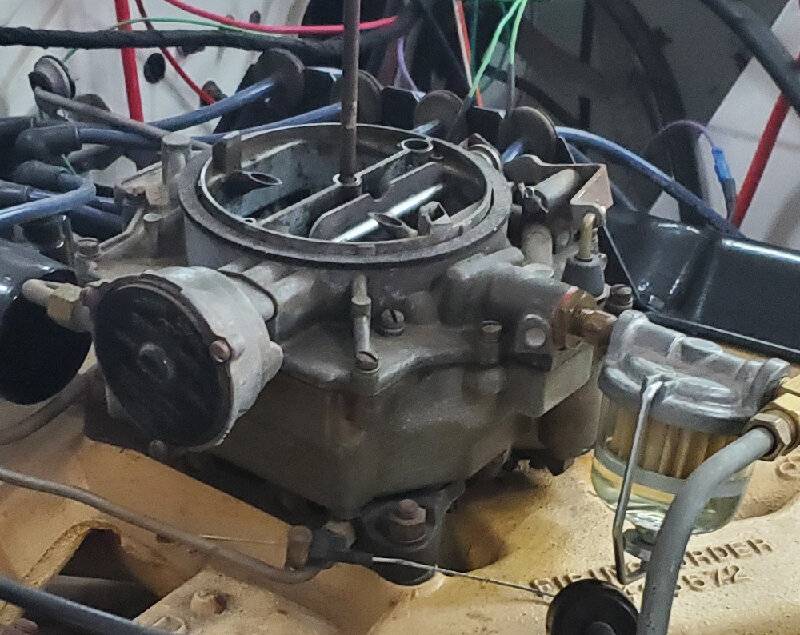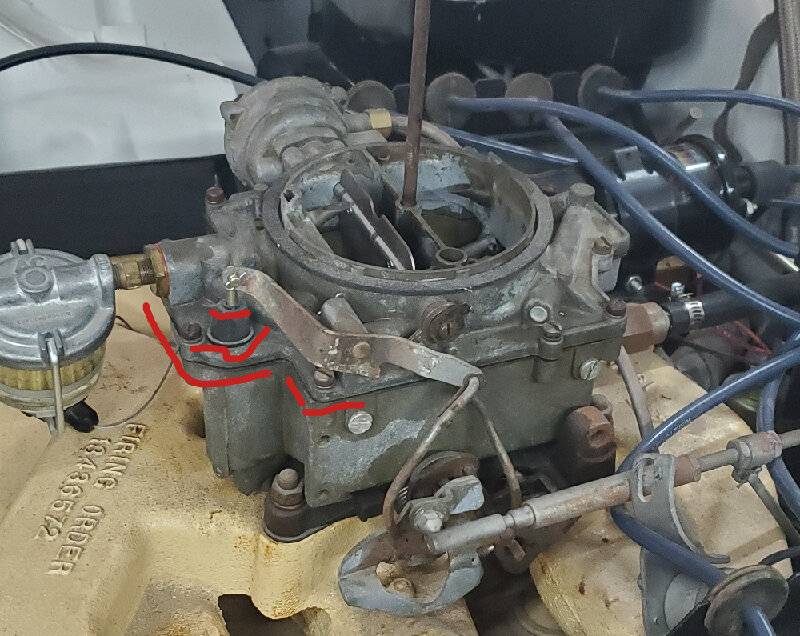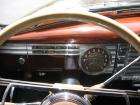|
Re: Stewart's 1955 Packard 400
|
||||
|---|---|---|---|---|
|
Home away from home
|
Tried to run on the engine today for an extended time.
The carb, that I rebuilt, was not up to the task. There were leaks along all the red lines in image 2 and the floats must be off because it was overfilling. Thinking about having it rebuilt by someone smarter than me. Any suggestions?
Posted on: 2023/9/28 19:27
|
|||
|
Stewart Ballard
|
||||
|
||||
|
Re: Stewart's 1955 Packard 400
|
||||
|---|---|---|---|---|
|
Home away from home
|
Could easily be that the float stuck from sitting. Smack the carb with a small hammer and try again.
Posted on: 2023/9/28 20:48
|
|||
|
||||
|
Re: Stewart's 1955 Packard 400
|
||||
|---|---|---|---|---|
|
Home away from home
|
I had that problem, when I first tried to test drive the car. Turned out one of the floats was no good. didn't show up during the carb rebuild. It had pin holes in it, taking in fuel. once I put new floats in the leaking stopped....just a thought
Posted on: 2023/9/28 23:37
|
|||
|
1956 Packard Executive 2 door hard top (5677A)
1956 Clipper Deluxe Touring Sedan (5622)(parts car) |
||||
|
||||
|
Re: Stewart's 1955 Packard 400
|
||||
|---|---|---|---|---|
|
Home away from home
|
Looking at your carb.2 photo, one can see two slotted plugs on the side of the carb near the top. These ports are to check the level of the fuel in the bowls. Remove the plugs with the engine at idle and look for the fuel to be at of just below the ports. If fuel spills out, the float level is too high. Likewise, if fuel level is not visible or far below the ports, the float level is too low.
Posted on: 2023/9/29 12:50
|
|||
|
We move toward
And make happen What occupies our mind... (W. Scherer) |
||||
|
||||
|
Re: Stewart's 1955 Packard 400
|
||||
|---|---|---|---|---|
|
Forum Ambassador
|
And if you do decide to get a professional rebuild Daytona Parts has done several carbs for posters on the forum. Don't remember reading any negative comments on their rebuilds.
Posted on: 2023/9/29 12:59
|
|||
|
Howard
|
||||
|
||||
|
Re: Stewart's 1955 Packard 400
|
||||
|---|---|---|---|---|
|
Home away from home
|
Tried whacking the carb with a hammer but no change. The engine will not idle right now so checking those 2 ports was no good.
I pulled the carb off yesterday afternoon. I'll crack it open again this week after I do some reading. Looked at several companies (with websites) that rebuild cards, including Daytona Parts. While I am sure Daytona does great work theirs is the only site that does NOT list any pricing whatsoever. Several sites (with good reviews) offer rebuilds for less than $300 but before I go that route I'll take a look at it myself.
Posted on: 2023/10/1 17:40
|
|||
|
Stewart Ballard
|
||||
|
||||
|
Re: Stewart's 1955 Packard 400
|
||||
|---|---|---|---|---|
|
Home away from home
|
People in the past have repaired FUEL float pinholes with some solder. Not sure if you could do the same with carb floats or if it would pull them too far out of calibration.
Posted on: 2023/10/1 18:09
|
|||
|
1955 400 | Registry | Project Blog
1955 Clipper Deluxe | Registry | Project Blog 1955 Clipper Super Panama | Registry Email (Parts/service inquiries only, please. Post all questions on the forum.) service@ultramatic.info |
||||
|
||||
|
Re: Stewart's 1955 Packard 400
|
||||
|---|---|---|---|---|
|
Home away from home
|
I checked and tested the carb floats this week. Found no holes and the measurements when installed match the manual.
Before I put it back on the engine I need to figure out the TV/kickdown cable needed by the 700R4. I am digging up all my reference pictures now. Took some replacement parts to the interior guy yesterday. He has some of the pletes for the front seat sewn up. He said all his other jobs are done so he can concentrate on mine now. Attach file:  20231004_125141_resized.jpg (191.50 KB) 20231004_125141_resized.jpg (191.50 KB)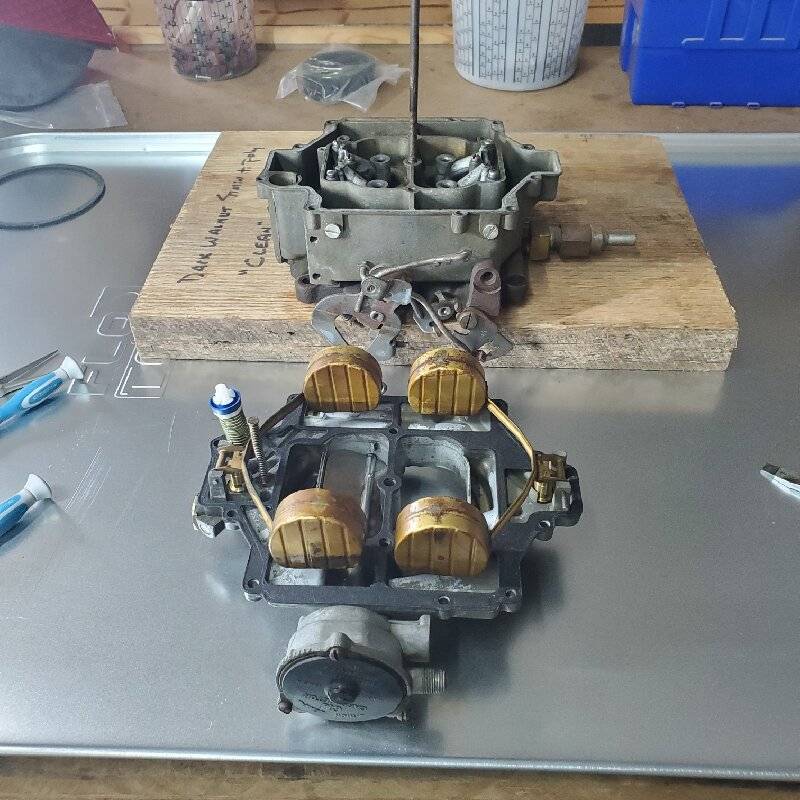  20231005_124425_resized.jpg (145.65 KB) 20231005_124425_resized.jpg (145.65 KB)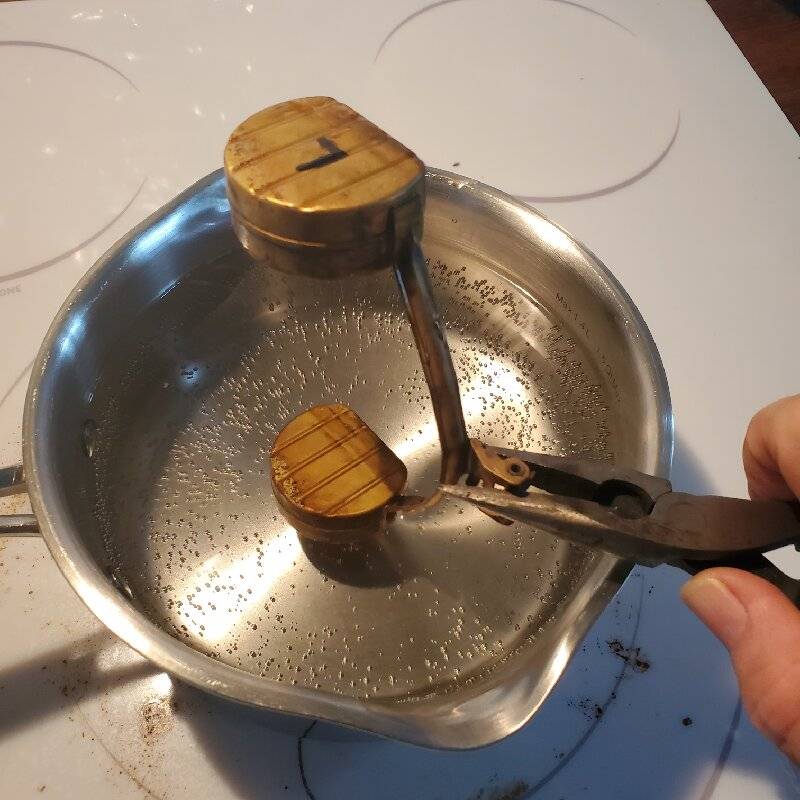  20231004_094638_resized.jpg (253.46 KB) 20231004_094638_resized.jpg (253.46 KB)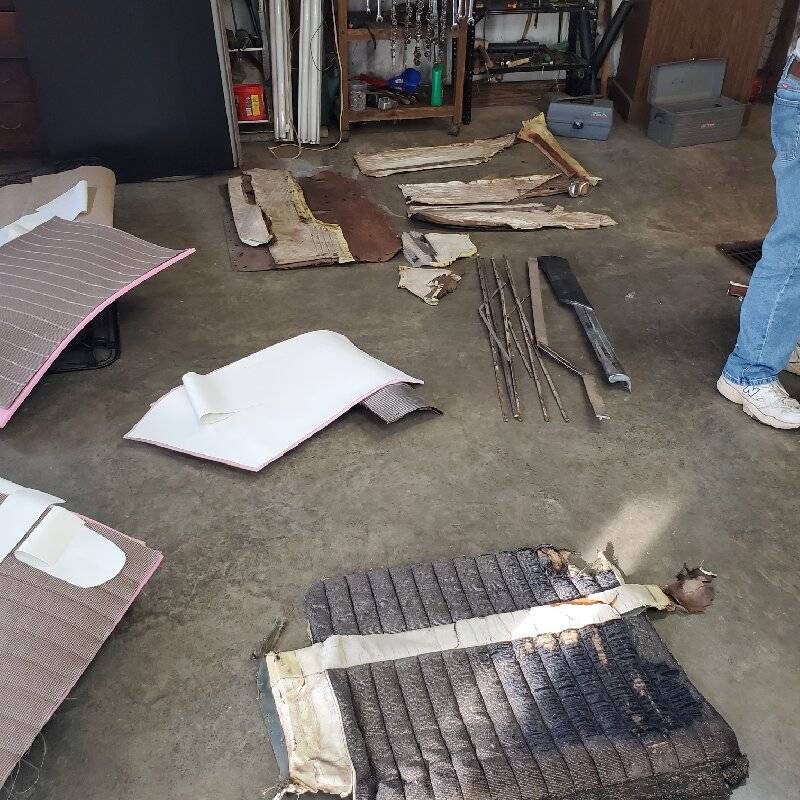  20231004_094635_resized.jpg (231.77 KB) 20231004_094635_resized.jpg (231.77 KB)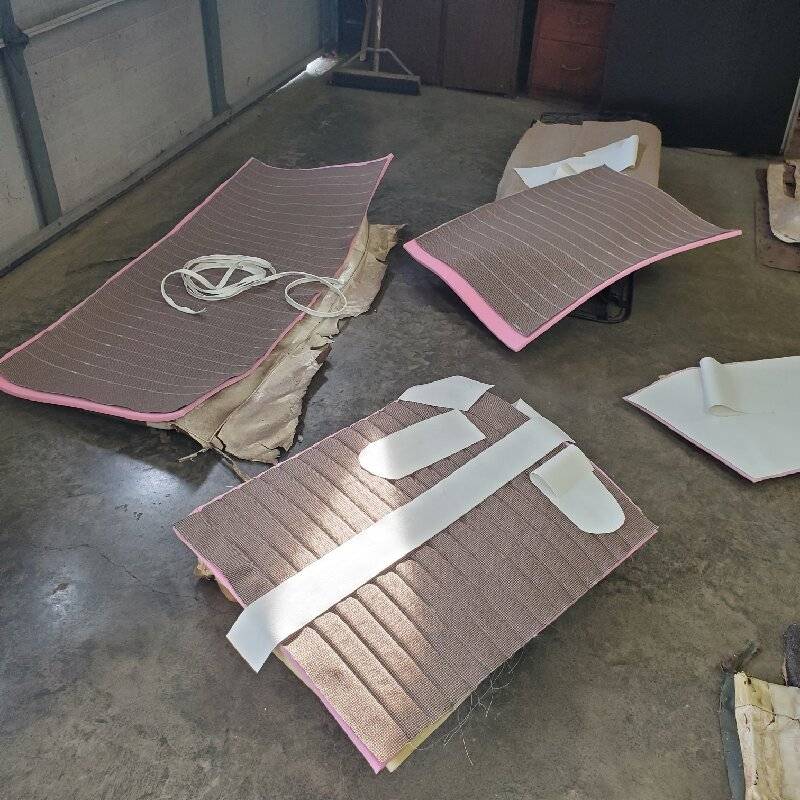
Posted on: 2023/10/5 15:51
|
|||
|
Stewart Ballard
|
||||
|
||||
|
Re: Stewart's 1955 Packard 400
|
||||
|---|---|---|---|---|
|
Home away from home
|
Stewart
The ‘bubble test’ is valid only while the air in the float is changing temperature from room to water temperature. Given the limited volume (mass) and the conductivity of brass that should take long, perhaps within the first minute. However if the float has a liquid, like gasoline, in it the gas vapors will expel for a greater amount of time. All of this assumes a hole. If there is no hole then there are no bubbles. The first inspection activity is normally a ‘shake test’. If there’s gasoline in the float you can hear and feel it while shaking the float. If you hear or feel that something is inside the float run the bubble test before you try to remove the offending gasoline. Let’s say the float has been dry of a week or so, in that case I would submerge the float into gasoline for several minutes . . . maybe a lunch break, and then do the ‘shake test’. The ‘soak first in gasoline’ is probably a best practice whenever a float is being leak checked. This is about the only time fuel percolation is beneficial. Given the seasonal and operational temperature change of the gasoline, the change in the gasoline’s density will be far greater than the extra weight of a solder repair of a float. It’s one of those insect feces squared situations, plus you’re likely sealing a crack in a solder joint in the first place, and thus not adding a lot of extra weight. dp
Posted on: 2023/10/5 19:35
|
|||
|
||||

